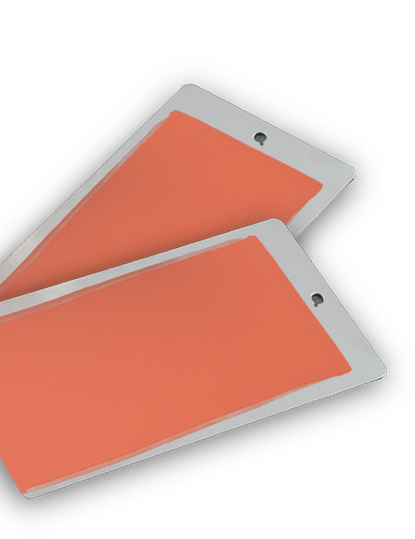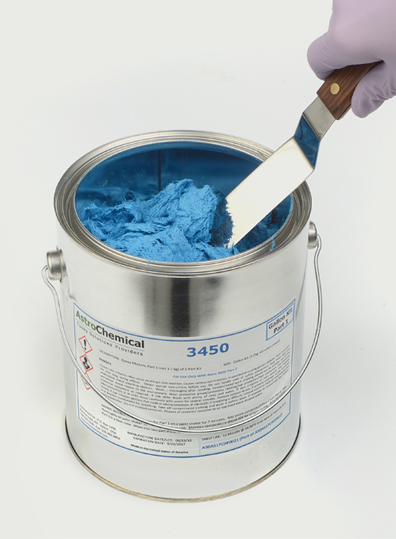Astro Chemical’s Guide to Choosing the Right Saturating Resin
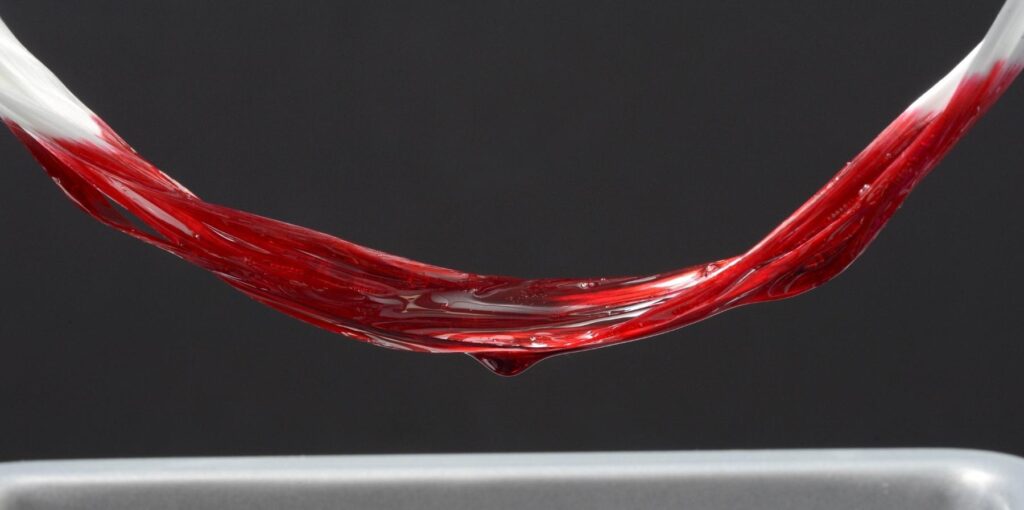
Astro offers a series of low viscosity, 100% solids, room temperature cured epoxy resin systems designed for saturation, consolidation and impregnation of various substrates and composites in electrically insulated systems. These materials can be used to saturate and consolidate felts, tapes, and fabrics, to weep and penetrate cracks and gaps, as well as to flood stator end windings to mitigate vibration. The goal of these systems is to consolidate the area or the composite being saturated to maximize the mechanical and dielectric properties of the cured assembly over the expected service time and temperature life of the insulation system. This post highlights a few of the key considerations in choosing the right system for your application.
Viscosity is an important differentiation for the various systems available. The lower viscosity products are ideal for weeping applications, such as consolidating lamination cores, loose windings, or filling micro-cracks. For weeping/lamination applications, they exhibit the proper rheology to facilitate the required capillary action to penetrate as far as possible. Astro 3093, 6250, and 6414 are proven performers in this category, with the latter having a slightly longer cure time.
Tying/lashing resins for strands, tapes and felts typically require a viscosity of 750–1,500 centipoise to ensure maximum substrate saturation. Pot life is a key factor: tying/lashing is a time-intensive process, so a longer pot life/working life will minimize mixing interruptions. However, faster-curing options are available to allow operators to move past tying operations quickly to minimize repair/rewind time. The chart below lists the Astro product offering specific for tying/lashing operations in hydro and turbogenerators by chemistry, pot life and thermal classification.
| Product | Chemistry | Working Life, hr.¹ | Thermal Class² |
|---|---|---|---|
| Astro 6269L | Epoxy | 1.0 | Class 180 (H) |
| Astro 6414 | Epoxy | 2.0 | Class 180 (H) |
| Astro 6510R | Epoxy | 3.5 | Class 180 (H) |
| Astro 6021 | Polyester | 5.0 | Class 155 (F) |
| Astro 6415 | Epoxy | 5.0 | Class 180 (H) |
¹ 22 – 25°C/72 – 77°F
² ASTM E1641 and ASTM E1877
Flooding applications consolidate larger areas, such as stator ending windings, to mitigate vibration forces and provide and extra layer of dielectric protection. Since complete saturation of large composite areas is required, higher-viscosity materials (1,500–3,000 centipoise) are used. These resins wet the substrates completely, providing good coverage and minimal running. Astro 3104 (Class B) and Astro 6269 (Class H) are two popular options with comparable viscosity and pot life but offer differing final cured properties. Astro 3104 is relatively more flexible and resilient where Astro 6269 offers ultimate strength and thermal classification.
Environmental factors during application need to be considered. High humidity can slow or prevent the cure of many epoxy and polyester resin systems. Astro 6250 and 6510R provide excellent cure speed and processing in humid conditions.
The chart below compares the mixed viscosities of various Astro products. While thinner materials, such as Astro 6250 and 6269L are ideal for weeping applications, they may be and have been used for tying/lashing applications. The range of viscosity offerings allow operators and engineers to chose the proper material based on the application, the substrate, the desired working life and the required thermal classification.
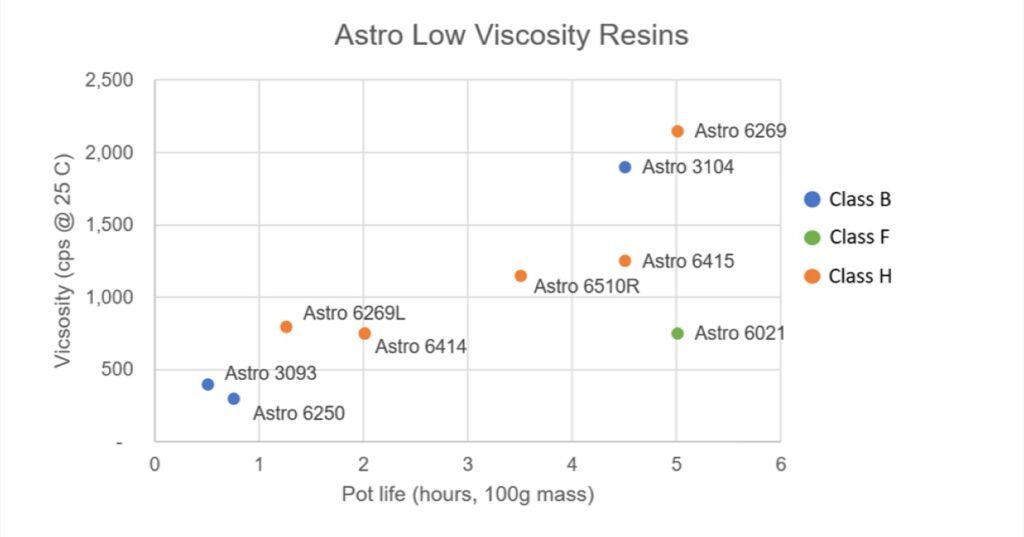
While all of the Astro product presented are room temperature cured products, any application of heat above ambient temperatures (22 – 25°C/72 – 77°F) will accelerate the crosslinking reaction making them ideal for field repair applications. Heat will accelerate cure, allow the Astro resin system to achieve the final required mechanical and dielectric properties faster, and may result in overall better properties than a longer, lower-temperature cure.
Operators commonly ask about the minimum cure time required before an insulation system should be electrically tested, e.g., HiPot testing. While no definite answer can be provided – each situation varies by ambient conditions, substrate utilized, the mass of material applied – the below graph illustrates the effect of degree of cure on the relative electrical properties of Astro 3104. While not offered as a guide, it does illustrate that mild heat can accelerate the curing process to achieve the required dielectric properties sooner, and may even exceed the properties of a longer cure at lower temperatures.
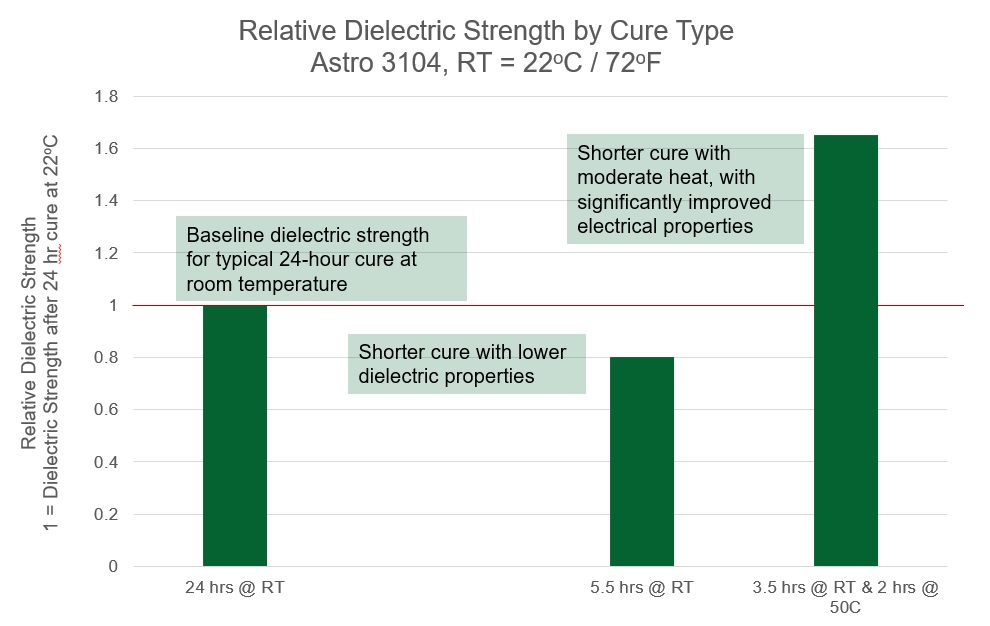
From weeping to lashing to flooding, Astro’s engineered resin systems help ensure durability, insulation integrity, and reliable service in demanding electrical insulation systems applications. By offering a broad range of viscosities, pot lives, and thermal classifications, Astro provides tailored solutions to meet the specific demands of each application – whether penetrating tight voids, saturating felts and tapes, or consolidating large end-winding structures – and gives engineers and operators the flexibility and confidence to maintain high-performance insulation systems across a range of equipment and service environments.

